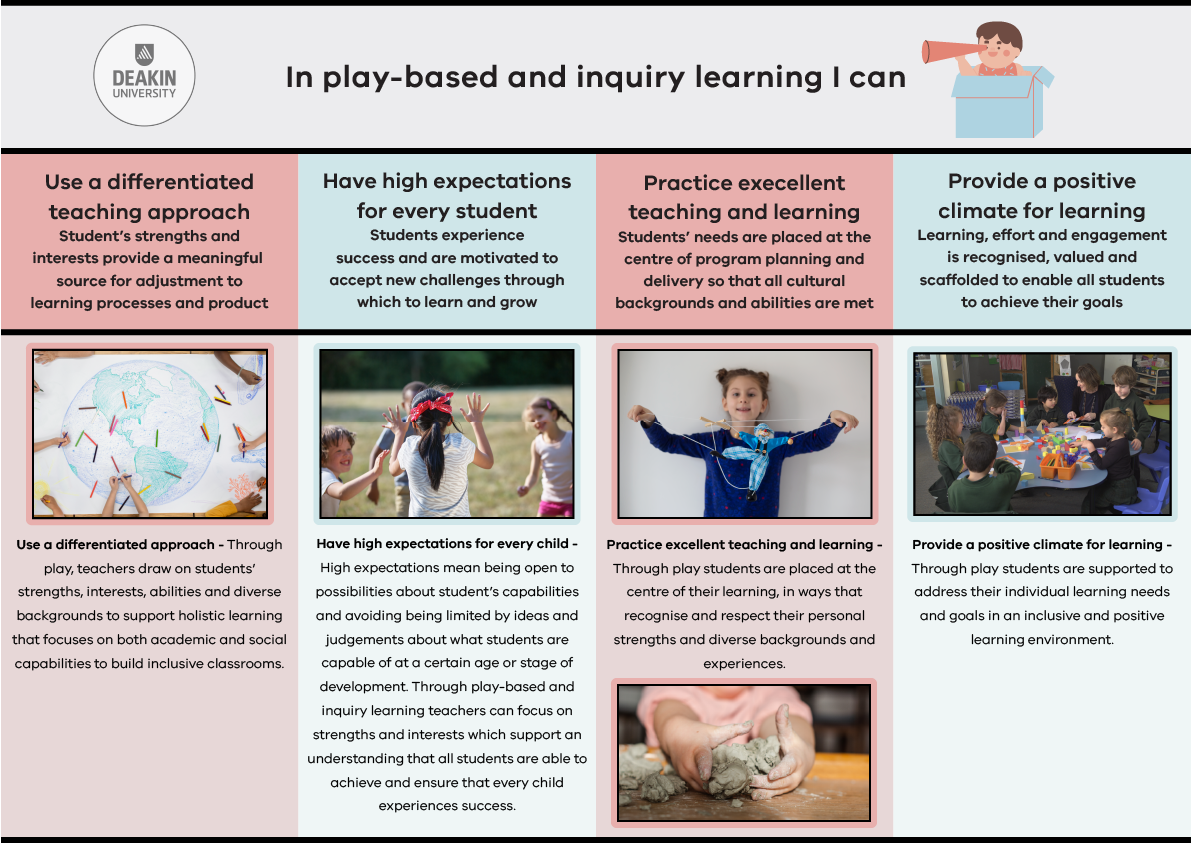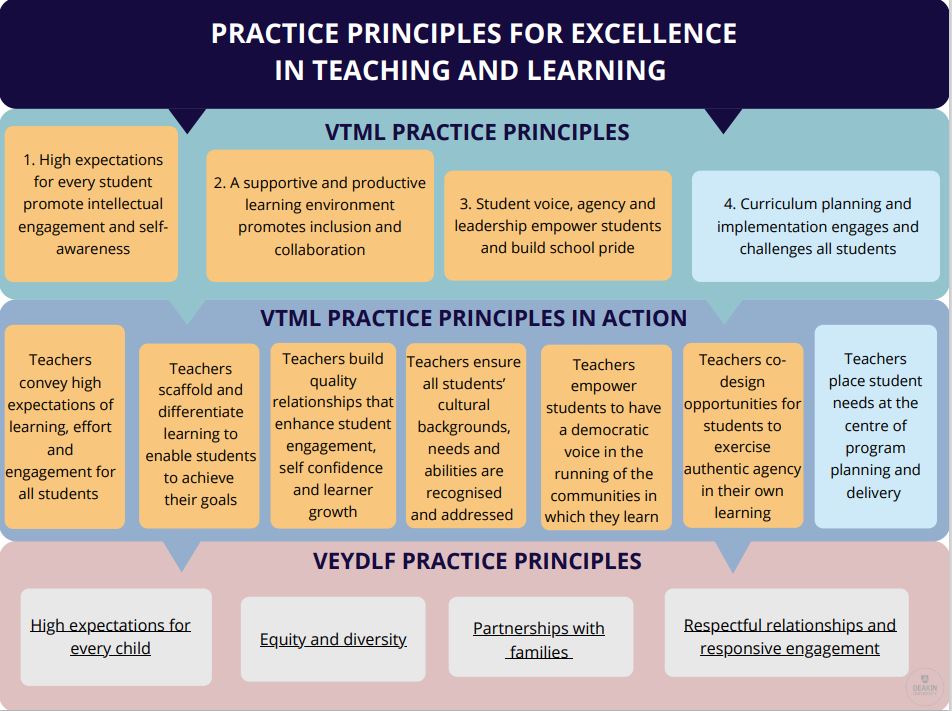Differentiation is an approach to teaching and learning that was popularised by American academic Carol A Tomlinson. In this short video, Emeritus Professor Tomlinson outlines what she means by differentiated instruction.
Based on Professor Tomlinson's explanation, the key features of differentiated instruction can be summarised as "a way of thinking about teaching" that
- is student-focused
- actively incorporates teacher knowledge of individual student's learning preferences in conjunction with curriculum content
- establishes clear and substantive learning goals, and
- closely observes students and their learning process and products to identify where learners are at and make appropriate adjustments.
These key features of differentiated instruction align well with a play-based and inquiry approach in classrooms.
Effective teaching and learning is differentiated
In the following interactive experience Associate Professor Liz Rouse and Dr Kim Davies provide practical insights into the ways in which differentiated teaching and learning is demonstrated through play-based and inquiry learning.
Building on children’s diverse abilities, differentiation and HITS
Effective and appropriate differentiation is evidenced to increase student engagement and learning outcomes and is included as the
tenth of the HITS. In Module 1 you were introduced to the Practice Principles for differentiated play-based and inquiry learning. We will now re-visit these through the lens of play, as a vehicle to support differentiated teaching and learning.
Remember that all play experiences should recognise and respect the diverse backgrounds and experiences of students and their families.
Access to and engagement with play-based and inquiry learning must be facilitated by sensitivity to the languages, cultures, religions and circumstances of all the students in your Foundation classroom.
 Education for all means offering play-based and inquiry learning experiences that reflect and respond to the diverse backgrounds, experiences and abilities of all members of the school community.
Education for all means offering play-based and inquiry learning experiences that reflect and respond to the diverse backgrounds, experiences and abilities of all members of the school community.
Differentiation and HITS in practice, planning and teaching perspectives
In the interactive poster below, we revisit the potential of play-based and inquiry learning through the lens of differentiated teaching and learning.
Click on the + hot spots and read the teaching thought, consider how this resonates with your practice?
Downloadable resource
 A
A
 downloadable resource has been created that provides you with an easy print and use a version of the contents in the interactive poster above. The benefits of a play-based and inquiry learning approach extend beyond a student's transition to school. You may find all the modules and resources in this professional learning program helpful in supporting you and your colleagues to implement a whole school approach to play-based and inquiry learning, that upholds excellence in teaching and differentiated learning.
downloadable resource has been created that provides you with an easy print and use a version of the contents in the interactive poster above. The benefits of a play-based and inquiry learning approach extend beyond a student's transition to school. You may find all the modules and resources in this professional learning program helpful in supporting you and your colleagues to implement a whole school approach to play-based and inquiry learning, that upholds excellence in teaching and differentiated learning.
Diverse abilities and excellent teaching and learning practices
The infographic below provides a visual poster of the connections between practice principles in the VTLM and the VEYLDF in relation to differentiation in play-based and inquiry learning. To further support your learning about the links between these documents with regards to differentiation, please refer to the  VEYLDF illustrative maps
VEYLDF illustrative maps
Explore the connections between differentiation and the Practice Principles for excellence in differentiation in teaching and learning in a play-based and inquiry learning approach in the poster below.
Downloadable resource
 A
downloadable resource has been created that provides you with an illustrative map of how you differentiate teaching and learning through a play-based and inquiry lens. It resonates with both the VTLM and VEYDLF.
A
downloadable resource has been created that provides you with an illustrative map of how you differentiate teaching and learning through a play-based and inquiry lens. It resonates with both the VTLM and VEYDLF.
Teacher reflection
In the following video, Foundation teacher; Elise talks about how she utilises play-based and inquiry learning to support the learning and development of all learners. As you watch the interactive video, think about Elise's comments in relation to:
- knowing children's individual interests, and
- teaching strategies such as questioning, modelling, and mediating.
To view Elise in action, the interactive video below revisits Elise’s classroom as seen in Module 1.5. However, in this instance note how Elise differentiates her teaching strategies in play as she interacts with each student.
The strategies that Elise talks about in her interview are put into practice. These strategies come to life as she engages with the children. Consider the questions, roleplay and provocations that makes the play richer.